High in the Arctic, a few thousand hardy souls and a bunch of polar bears call the Svalbard archipelago home. The history of these remarkable islands is a long and fascinating one.
How does a collection of frozen rocks in the Arctic become an important yet unassuming location of geopolitical importance for centuries? Join me as we discover how, time and time again, Svalbard found itself in the right place at the right time.
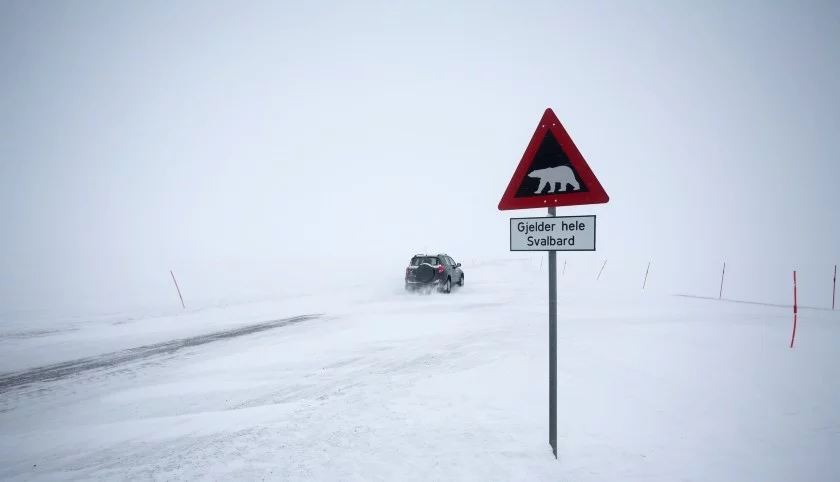
Located 580 miles (930 km) North of Tromsø, roughly halfway between Norway and the North Pole, Svalbard is an archipelago comprising nine main islands with a total area of 24,209 square miles (62,700 square km).
At 74-81 degrees north in latitude, it’s well inside the Arctic Circle. It’s certainly not the sort of place you stumble upon while sailing anywhere you’d want to be! Instead, like so many things, we have 16th Century European Imperial expansion to thank.
Table of Contents
The discovery of Svalbard
While many Norwegians believe the Vikings discovered Svalbard in 1194, there’s no evidence of this outside of the mention of ‘Svalbarði’, the ‘cold rim’ in the Chronicles. This was somewhere found after a few days sailing north from Iceland, which could easily be Svalbard but could also be Jan Mayen, or even just an area of pack ice.
Of course, it’s always safer to defer to the Vikings so in the absence of real evidence to the contrary, I’ll let them have this one! If nothing else, it did give the place its name of Svalbard.
The real, documented history of Svalbard, however, begins in 1596 when a Dutch explorer by the name of Willem Barentsz set out on his third and final voyage to discover the Northeast Passage.
Read more: Fascinating Facts about Svalbard
The aim was to find a quicker way to get trading ships from Europe to the Pacific and Indian Oceans without having to go all the way down almost to Antarctica.
Originally discovering a small island that they named Vogel Eylandt or Bird Island that eventually became Bjørnøya (or Bear Island), the southernmost island of the Svalbard archipelago.
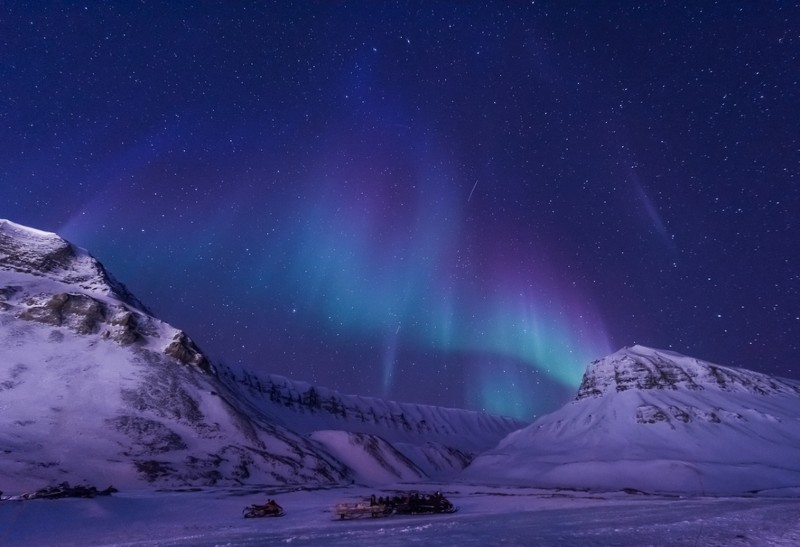
A week or so later they found Spitsbergen, Svalbard’s largest island, where they explored a little and set up a post bearing the Dutch coat of arms.
The voyage then returned to Bear Island and a disagreement led to the two ships splitting up and taking different courses. Tragedy struck and Barentsz lost his life.
Barentsz never did find the Northeast Passage but the sea between Scandinavia and Svalbard bears his name today. The islands were explored by Henry Hudson – of New York river fame – in 1607 and three years later the islands became the focus of a more commercial activity.
Gold in the sea
In those days, oil was a much sought-after commodity. Though crude oil and its products were known in the Middle East, much of the world still relied on plants and animals for fuel and lubrication. Whales and walruses are particularly prized for this because while they’re difficult to kill and capture, the rewards are huge.
Read more: The Remarkable Winter Wildlife of Svalbard
In 1604, a Walrus hunting expedition to Bjørnøya was organised by the the Muscovy Company, a British trading company. Their lack of expertise meant they weren’t very successful, but they returned over the next few years, killing more and more each time until they eventually reached local extinction.
The Muscovy Company then turned its attentions to Spitsbergen, where whales had been reported in huge numbers. Their first expedition in 1611 ended in shipwreck and rescue.
In 1612 they sent out a fresh expedition and encountered Dutch and Spanish whalers. These were expelled by the Muscovy Company using force, which led to an international conflict.
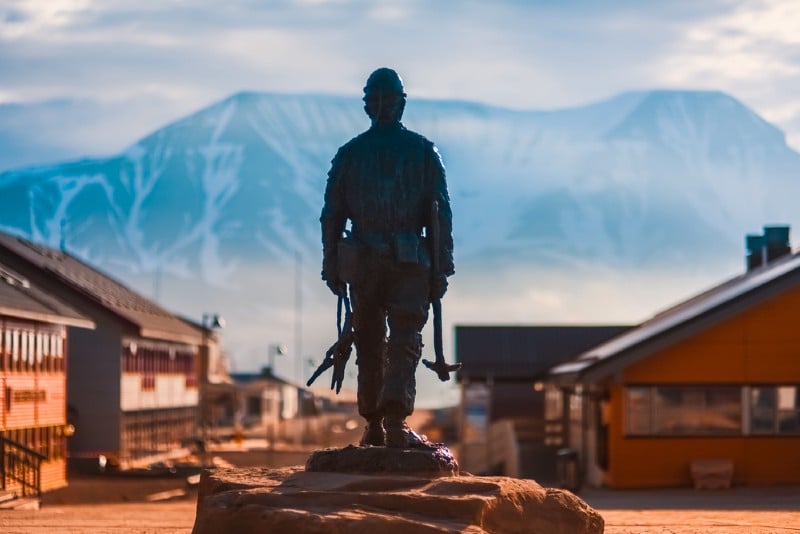
The Danish-Norwegians and the British both claimed exclusive rights, while the French, Dutch and Spanish claimed it was free due to being in International Waters.
Realising that it was destroying their profitability they agreed to partition the island and then, when The Muscovy Company went out of business, the Dutch effectively controlled the island, allowing the English, French and Danish only limited access.
Read more: Living on Svalbard
At its height, Spitsbergen was supporting 2-300 whaling ships and in excess of 10,000 whalers split between crew catching whales and the land stations where the whales were processed.
As with the walruses, the whales were killed faster than they could be replaced and eventually the crews had to move out to open sea to find their quarry.
As more of the processing started to be done at sea, and the rest moved to the mainland, the need for facilities in Spitsbergen dwindled. The most famous whaling land station, Smeerenburg, was abandoned in 1660 and another chapter in Svalbard’s history closed.
A centre of exploration
The whalers had built up a highly detailed knowledge of the coastal geography, but the inland was still mainly unexplored.
The first accidental overwintering on Spitsbergen occurred in 1630-31 by an English group, followed in 1633-4 by a Dutch group who successfully completed the first planned overwintering. This proved that, while challenging, permanent settlements on Svalbard would be possible.
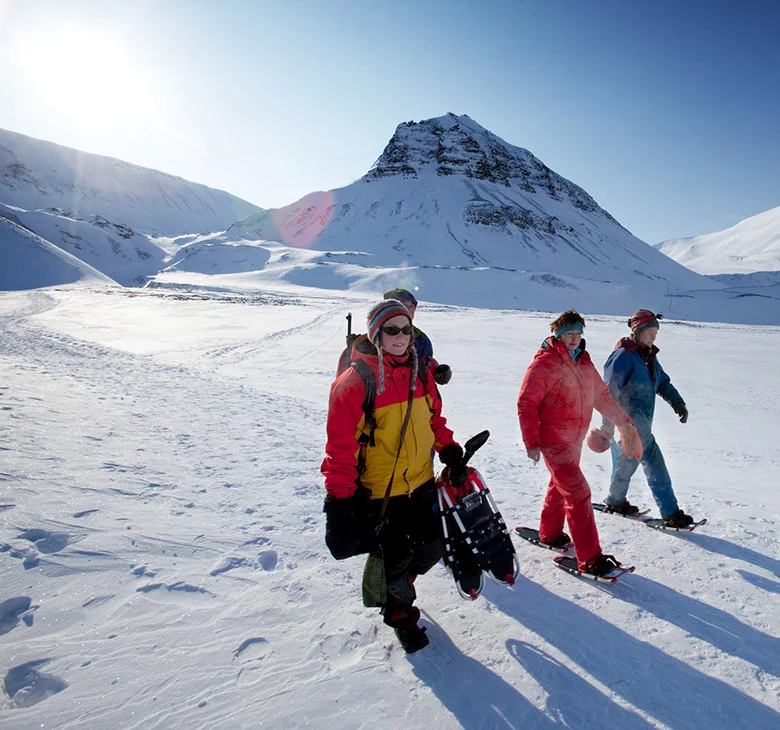
Following the decline of the whaling industry around Svalbard, the 18th century became more about exploration. Another unsuccessful Russian expedition to find the Northwest Passage in 1764-66 made scientific measurements of the island’s topology.
In 1773, a British Royal Naval expedition took zoological and botanical samples from the island. As scientific exploration gathered pace, many large and small scale investigations took place over the most of the 18th and 19th centuries.
The British, Norwegians, Swedes Russians and French all mounted expeditions and it was a British cartographer, Martin Conway, who produced the first map of the island’s interior.
As well as studying Svalbard itself, the islands proved a useful starting point for Arctic exploration. Several expeditions, including Roald Amundsen’s airship Norge, widely credited as the first successful mission to the North Pole by air, started out from Ny-Ålesund.
Exploiting the natural resources of Svalbard
The first attempt to create a permanent settlement in Svalbard was by a Swedish team planning to mine Phosphorite, a phosphor-rich rock. The settlement was established but the mining never took place and it was quickly abandoned. Attention soon turned to coal and after a couple of semi-successful attempts, the first enduring mining operation started in 1906.
The Arctic Coal Company was started under the direction of the American industrialist, John Munro Longyear who purchased rights to the west side of Adventfjorden. The town of administrators and labourers that sprung up was named Longyear City, later renamed to the Norwegian translation, Longyearbyen.
Another entrepreneur, Ernest Mansfield, attempted to mine marble. The operation started but the marble that was mined was found to be unusable and soon folded. By the 1910s it was accepted that coal was the only resource in Svalbard that was worth mining.
The Swedish set up mines at Pyramiden (1910) and Sveagruva (1917) and the Dutch established Barentsburg (1920).
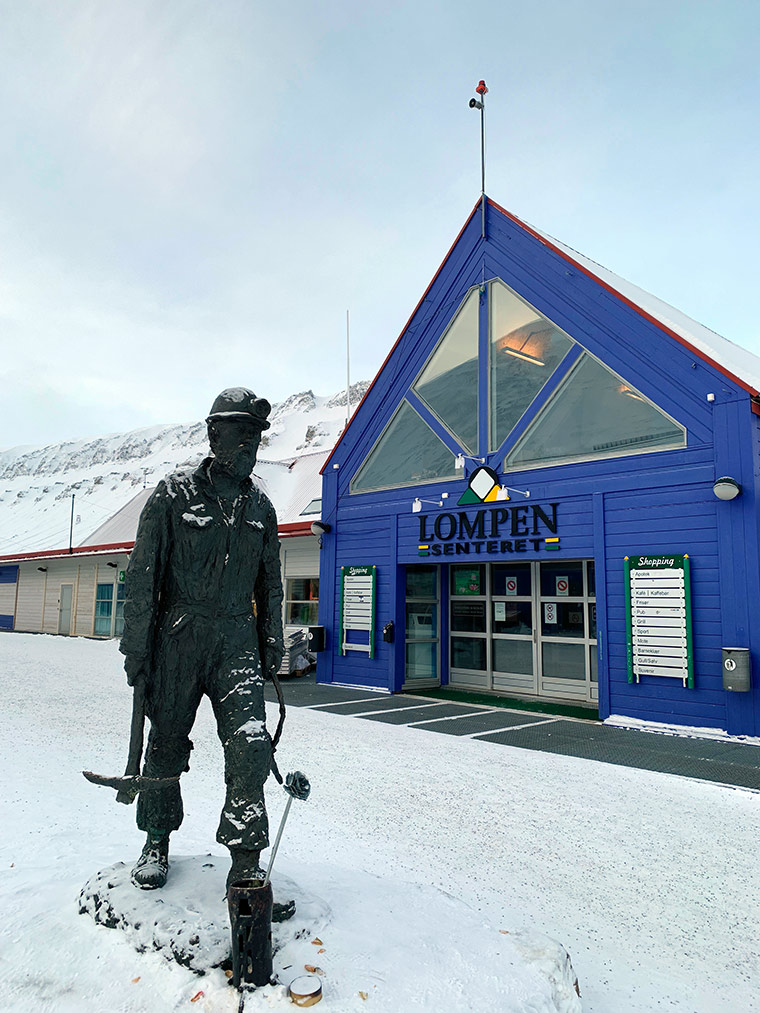
Meanwhile, due to difficulties in the First World War, the Arctic Coal Company ceased trading in 1916 and the town and its mines were bought by Store Norsk Spitsbergen Kulkompani (SNSK) often known simply as Store Norsk. The Norwegians enhanced their mining activities in the same year by opening up mines in Ny-Ålesund.
Through all of this time, no one owned Svalbard. Denmark-Norway claimed the land, but it continued with no government and no formal laws. It was effectively a mining colony with interests run by various companies and governments, mostly harmoniously. As time went on, however, there came a need for somebody to take charge and settle disputes.
The Svalbard Treaty
Attempts to establish an administration in Svalbard actually began as far back as 1897, when the Finland-Swedish explorer Adolf Nordenskiöld established that only the Danish-Norwegians and the Russians would object to the annexation of the islands.
In 1907, the Norwegian Government formally opened multilateral negotiations between the interested parties. Various proposals were advanced at conferences through the 1910s but it wasn’t until the Paris Peace Accord at the end of World War I that the breakthrough finally came.
Norway had gained much goodwill through remaining neutral during the war. Germany and Russia were both excluded from the conference and, in February 1920 the Svalbard Treaty granted Norway full sovereignty over the archipelago. This came with two conditions.
Firstly, all signatories to the treaty had equal rights to the economic resources there. This meant that Norway couldn’t decide to kick all the other countries out of Svalbard and keep it to itself.
Secondly, the islands could not be used for any ‘warlike purposes’. Nobody could turn the islands into a staging post for military conflicts. We’ll see how well that worked in a few paragraphs!
The treaty came into effect in 1925 and by 1927 all outstanding conflicts, regarding who owned what, had been resolved. The Norwegian government claimed all unclaimed land. Over the 1920s and 30s, mining declined to the point where only Store Norske and the Soviet state-owned Arktikugol remained.
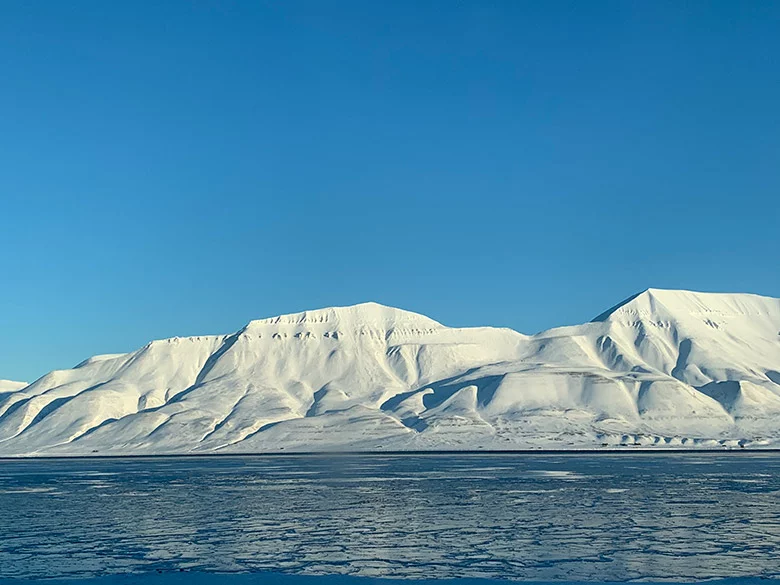
The Second World War
Svalbard was actually fine during the early years of the Second World War when the Germans occupied Norway in 1940, until 1941 when the Germans invaded the Soviet Union. The Soviets joined the allies and Svalbard was suddenly a strategically important place for the Allied supply lines.
Initially the Russians proposed joint Anglo-Russian occupation of Svalbard but the Norwegian exiled-government rejected this as being against the treaty.
So, the Norwegian and Soviet settlements were abandoned. Germany, seeing an empty staging post of strategic importance, occupied Longyearbyen and built an airstrip and weather station. In 1942, tried to liberate the island. Though attacked by German forces they managed to set up a garrison in Barenstburg.
The Germans then abandonded Longyearbyen and instead, through Operation Zitronella, attacked the island with destroyers and battleships to level Longyearbyen, Barentsburg and Grumant. In 1944 they returned with bombers to destroy Sveagruva.
After the war, the Norwegians and Soviets resumed their operations and rebuilt the settlements that had been destroyed. Mining continues on Svalbard to this day, with both Norwegian and Russian operations.
Connecting to the world
Even though Longyearbyen was a year-round settlement throughout most of the 20th century, it was still a company town. The infrastructure was there to support the mining operations rather than to create a place where families could live and build a community.
In the 1970s, the Norwegian government started talking about the need for a process of ‘normalisation’ to turn the company town into a regular community that could be self-sustaining beyond the mining operations.
The biggest step forward was the opening of the Longyearbyen airport in 1975. This allowed for regular and rapid transport between the island and the mainland, allowing Svalbard to be much less cut-off during the harsh winter.
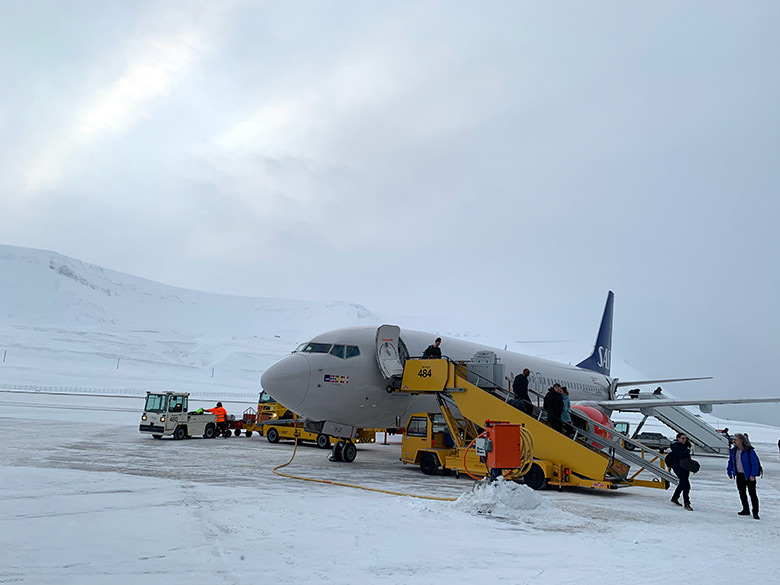
Even so, it wasn’t until the 1990s that normalisation became a reality. The authorities introduce a full range of services, including building a shopping mall, and diversified the economy. The first proper hotel, the Svalbard Polar Hotel, opened in 1995, paving the way for tourism.
Ny-Ålesund
While Longyearbyen was the first major settlement, and remains the world’s northernmost viable community town, Ny-Ålesund is also a major part of Svalbard’s history. It’s a town that started in mining and transformed into a major global research centre, bringing down an entire government along the way!
Established in 1917 by Peter Brandal and his mining company, Kings Bay Kul Comp was nationalised in 1933 after years of poor performance. Mining continued until a series of fatal incidents, including one accident that killed 21 miners, caused a huge scandal.
The Norwegian cabinet under Einar Gernhardsen resigned and mining operations were suspended permanently. Over the following years a number of research facilities opened, such as the Kongsfjord Telemetry station. Kings Bay sold all of its coal claims to Store Norske, keeping only the property rights.
The year-round population of Ny-Ålesund today is around 30, mostly scientists, rising to around 120 in the summer months. It’s still a company town, and whilst it’s not a real family community, it does lay claim to being the world’s northernmost functional civilian settlement.
Russian settlements
While Norwegians dominate the population of Svalbard, and Longyearbyen is the largest town, that wasn’t always the case. Russia entered the coal mining industry of Svalbard by establishing a mine at Grumant before also taking on the Dutch and Swedish concerns at Barentsburg and Pyramiden.
After the second world war, the Norwegians managed to get back to pre-war levels of mining quite quickly but the Russians took much longer and required more manpower. At one stage, there were 2,000 Russians producing less coal than the 1,000 Norwegians on the island.
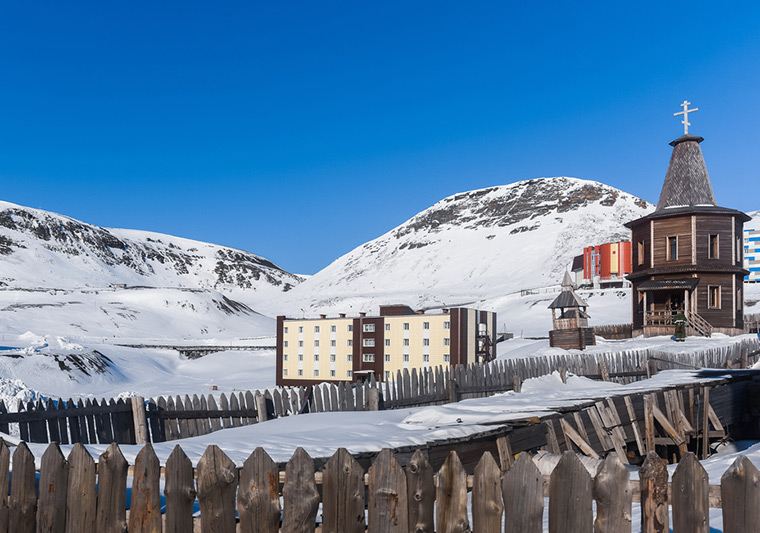
The settlement at Grumant grew to 1,200 people, making it the largest in Svalbard. It was abandoned in the 1960s but the remains are still there today. Pyramiden lasted longer, operating until the 1990s before being abandoned. The town does have a caretaker population of 6 in the summer and attempts have been made to turn it into a tourist attraction.
The Russians still operate mines on Svalbard, in Barentsburg. The town has a population of 470, making it the second largest settlement in the archipelago. This is made up almost entirely of ethnic Russian and Ukrainian workers.
They are trying to attract tourism to the town but the infrastructure of the island makes this difficult and the efforts have yet to generate enough income to revive Barentsburg.
The town is around 55km from Longyearbyen and there are no roads. Transport between the two is by boat, snowmobile or helicopter. As Svalbard is sovereign Norwegian territory, there is a Russian Consulate in Barentsburg. This is the northernmost diplomatic mission in the world.
The future of Svalbard
Today, tourism accounts for an increasing percentage of the island’s economy. As mining is subject to the ups and downs of global coal prices, dipping in and out of profit, so the island needs to attract money from elsewhere.
While a few hardy tourists are willing to visit in the harsh winter months, the summer is when Svalbard really comes alive. A town of just over 2,000 people welcomes tens of thousands of tourists, through flights and cruise ships each year.
This poses problems for Svalbard. As a unique example of inhabited arctic desert, both the community and the ecosystem are fragile. The more people who come and spend their Krone the better, but there are recognised problems with having so many people visit.
Another threat to Svalbard’s future is climate change. As the world heats up, the polar regions are heating up even more quickly.
This year saw Longyearbyen smash its previous highest temperature when the weather station recorded a temperature of 25.7 degrees Celsius (78.3 Fahrenheit). This may not sound much, but in a place with averages highs in the low teens, this is big news.
With luck and good judgment, Svalbard will be able to navigate away from a mining economy without harming the infrastructure or environment that makes it such a magical place.
No one knows what the future holds but I’m personally hoping that Svalbard is around for centuries to come.

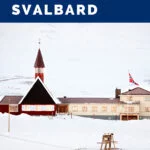

My grandfather mined on Svalbard right after WWII. I have his photos from that time, and they are fascinating! I would love to visit someday.
Lina,
I would love to look at the pictures. Would you email them to me?
[email protected]
Thank you.
Gerhard Bockness